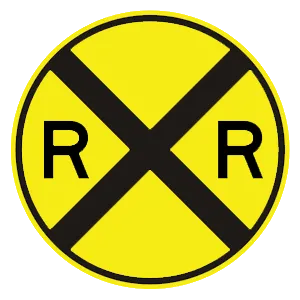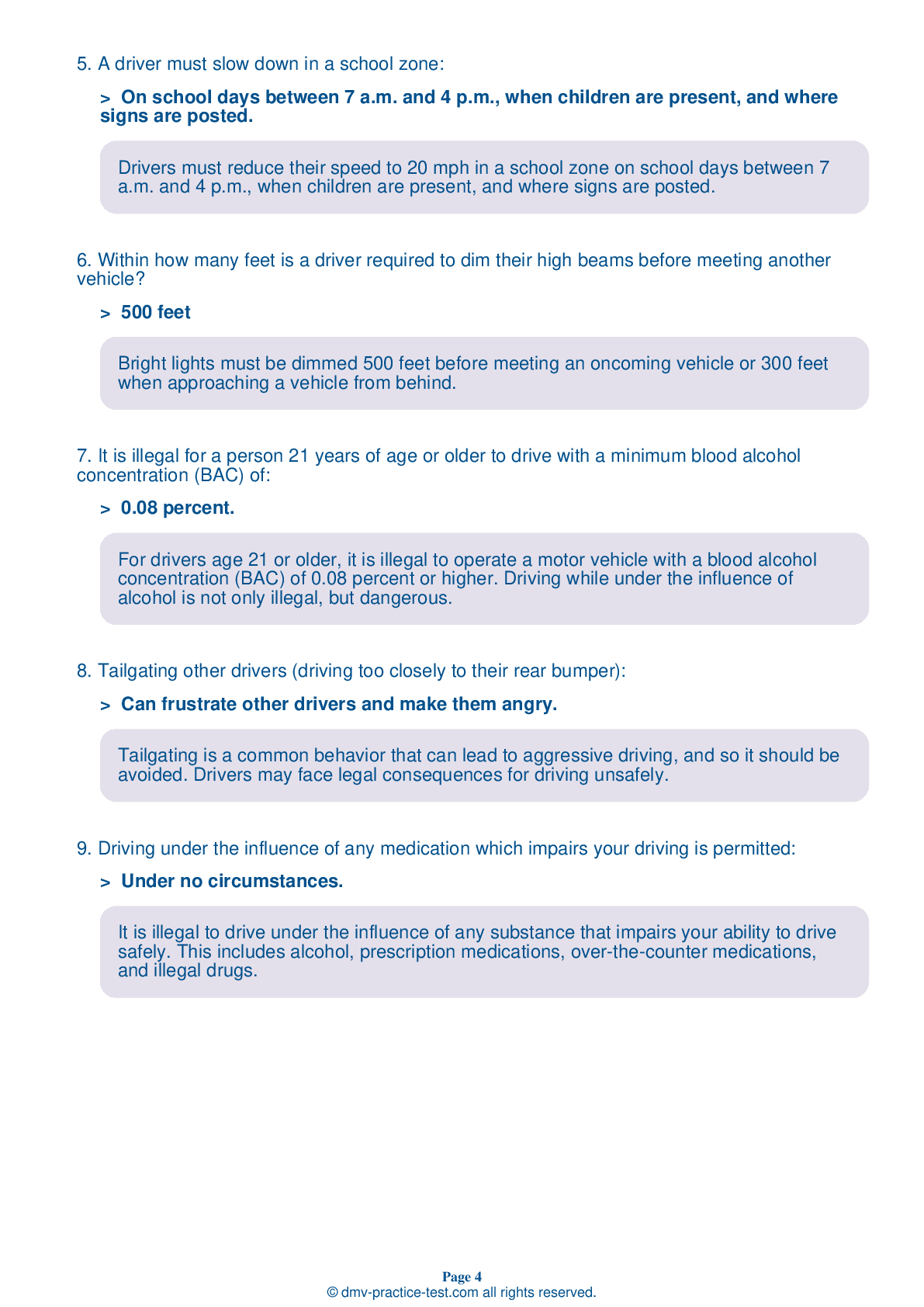FREE Illinois DMV Practice Test #6 Page 2 of 3
For January 2025, this set of Illinois DMV practise tests has been updated. It includes questions based on the most important traffic signs and rules for 2025 from the Illinois Driver Handbook. To study for the DMV driving permit test and driver's licence exam, use actual questions that are very similar (often identical!) to the DMV driving permit test and driver's licence exam.
Each question on the practise exam has a tip and explanation to help you recall the ideas. Questions about traffic rules, traffic signs, and driving statutes, as well as information from the Driver Handbook, will be included in the written portion of the official DMV test.
You must properly answer 38 of the 35 questions to receive a passing mark. To help you prepare for your Illinois instruction permit or driver's licence, take our DMV practise test.
The DMV exam is offered in a variety of languages.
Using any form of testing help will result in an automatic fail, and the DMV may take further action against your driver's licence, so avoid it.
13 . If you are driving and you see animals standing near the roadway:
Slow down and proceed with caution if you see animals that are standing near the roadway. They may unexpectedly bolt or change direction at the last moment. Some animals travel in packs, so there may be more animals just out of sight that are also near the road.
14 . The road surface of a bridge may be dangerous in winter because it may remain icy after the rest of the roadway is clear.
Bridges, overpasses, shaded spots, and curves may remain icy after the rest of a roadway is clear and dry.
15 . What message will be found on this yellow pennant-shaped sign?

Pennant-shaped yellow signs like this are used to indicate a no passing zone.
16 . This sign indicates a:

Yellow signs with black markings are used to warn drivers about upcoming hazards or special conditions. Round signs are used only to warn about upcoming railroad crossings.
17 . If you approach a traffic light with a red signal and a police officer directs you to go through the intersection without stopping, you should:
Instructions given by police officers directing traffic always override posted traffic signals and signs. Follow the officer's instructions.
18 . After a train clears a crossing that has flashing signals, drivers may proceed only after the lights have stopped flashing and no second train is coming on another track.
At a railroad crossing, a driver may proceed only after the gate is all the way up, the lights are no longer flashing, or the flagger has signaled traffic to proceed. A driver should visually check all the tracks for any additional oncoming trains or railroad equipment before proceeding.
19 . What does this road sign mean?

An octagonal sign always means stop. When approaching a stop sign, you must come to a complete stop at the marked stop line and proceed only when it is safe to do so. If there is no stop line, stop before the crosswalk. If there is no crosswalk, stop before the intersection at a point from which you can see any oncoming traffic.
20 . A sign with this shape means:

A pennant-shaped sign marks the beginning of a no passing zone.
21 . When driving in fog, you should use your high beam headlights.
You should use your low beam headlights when driving in fog. High beam headlights may cause the light to reflect off of the fog and into your eyes.
22 . What is the penalty for being convicted of illegally passing a stopped school bus?
A conviction for passing a stopped school bus with flashing lights and its stop arm extended will result in the suspension of an individual’s driver license. If the owner of the vehicle was not driving when the offense occurred, they must provide the State’s Attorney’s Office with the name of the person driving the vehicle or their vehicle registration will be suspended for three months.
23 . You should increase the distance between your vehicle and the vehicle ahead when you:
When being tailgated, create extra space in front of your vehicle and do not brake suddenly. Slow down gradually or merge into another lane to prevent a collision with the tailgater.
24 . Double solid yellow line markings down the center of a road indicate that passing is:
A double yellow centerline means that it is prohibited for traffic from either direction to cross the centerline to pass.
Need Car Insurance? No problem!
Compare the best rates in Illinois and find a personalized policy that meets your needs.
1. Are You Currently insured ?
2. Married ?
3. Do you own your Home?
4. Do you have more than 1 car ?
5. Have you or a Family Member Honorably Served in U.S. Military ?
6. Your Name
7. Age
8. Zip code
IMPORTANT REMINDER:Auto Insurance is Mandatory to drive in Illinois. Get covered before you hit the road to avoid any fines.
Ranked by best match



